Yesterday I introduced you to the Hoerikwaggo Trail. Today, we’ll start looking in detail at the geology. The predominant rock unit is the Table Mountain Sandstone, or more properly, the Peninsula Formation of the Table Mountain Group, a super clean quartz sandstone with scattered pebbles in it. It’s Cambrian in age. The pebbles are VERY well rounded, almost like Easter eggs:
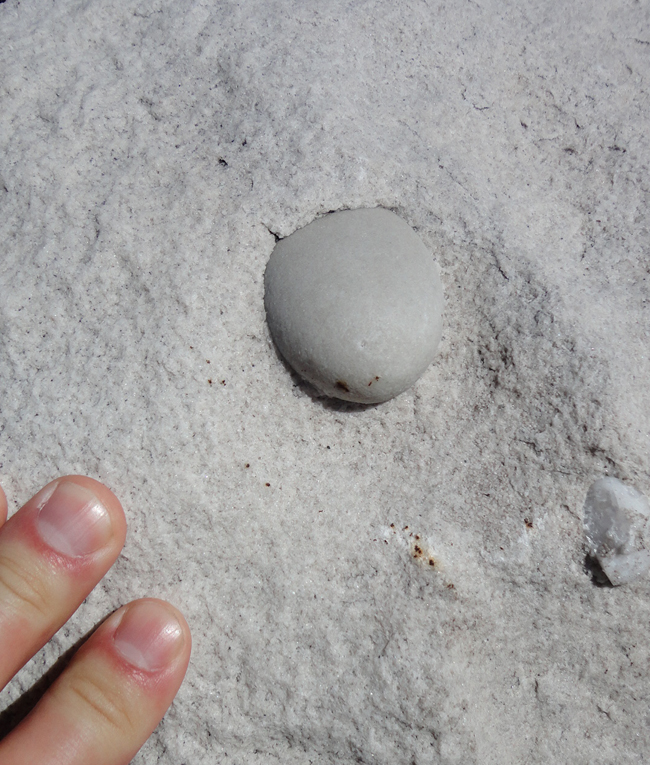
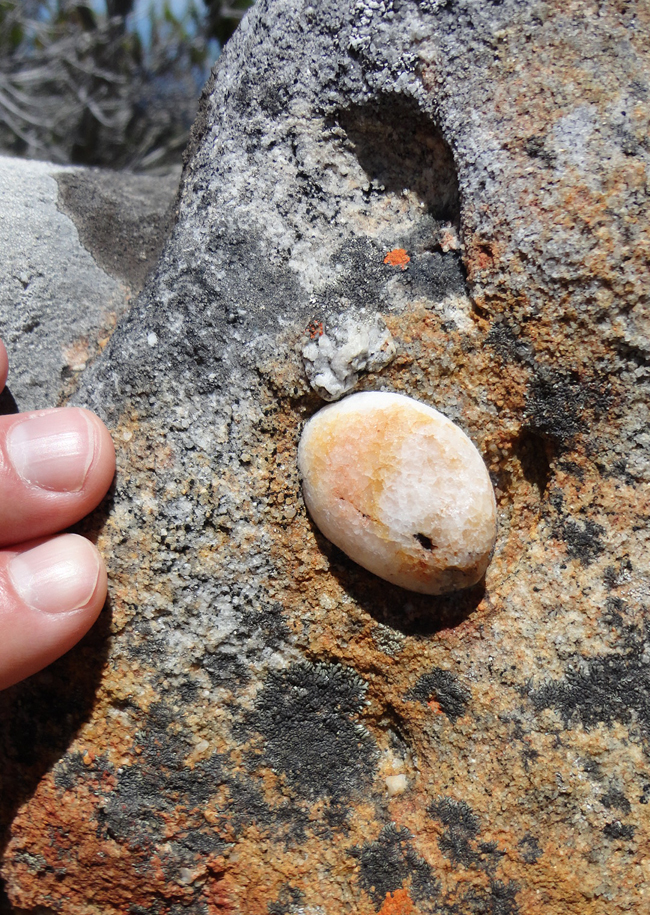
I saw plenty of isolated pebbles like the previous two, plus there were areas that were more or less “conglomeratic”…
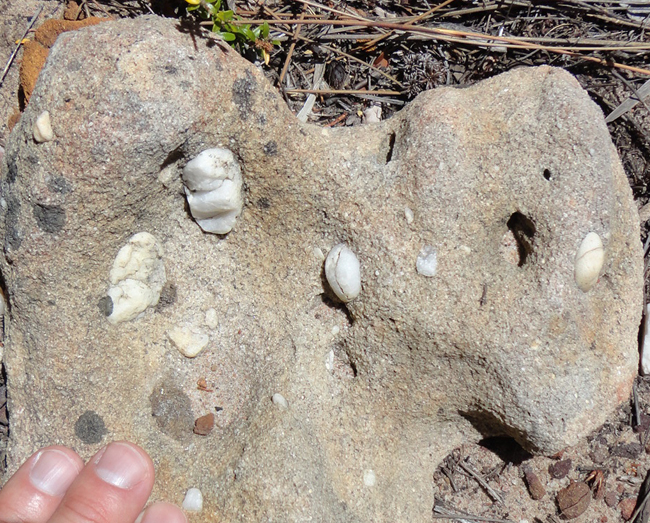
The sandstone is named for Table Mountain (the prominent flat-topped peak immediately south of the “City Bowl” of Cape Town), but it’s a regionally extensive unit, extending both north and east of Table Mountain proper.
As we hiked along, there were plenty of fine examples of cross-bedding, such as seen here:
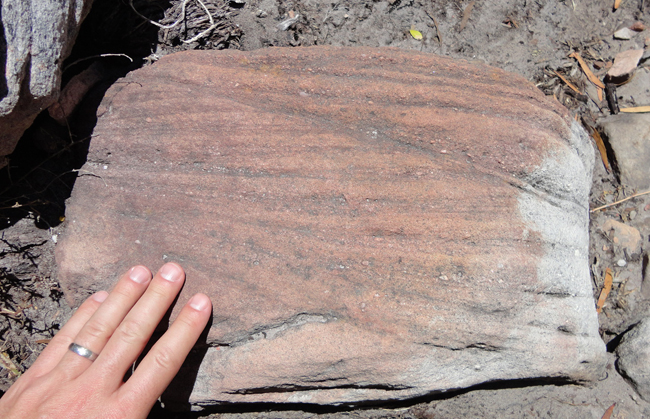
Remember how we used this cross-bedding to determine that many of the Table Mountain Sandstone strata at Cape Agulhas were overturned?
Annotated:
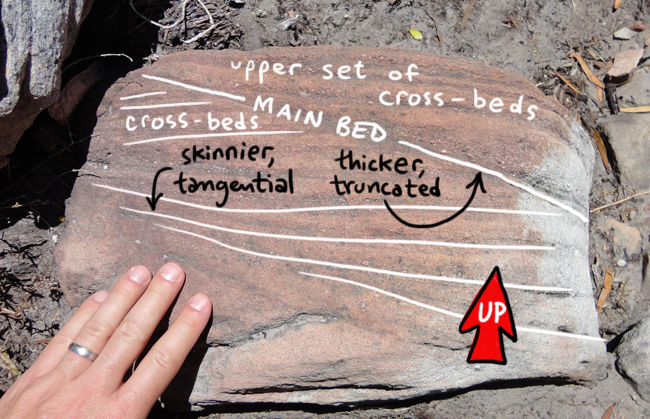
I saw a sole example of soft-sediment deformation:
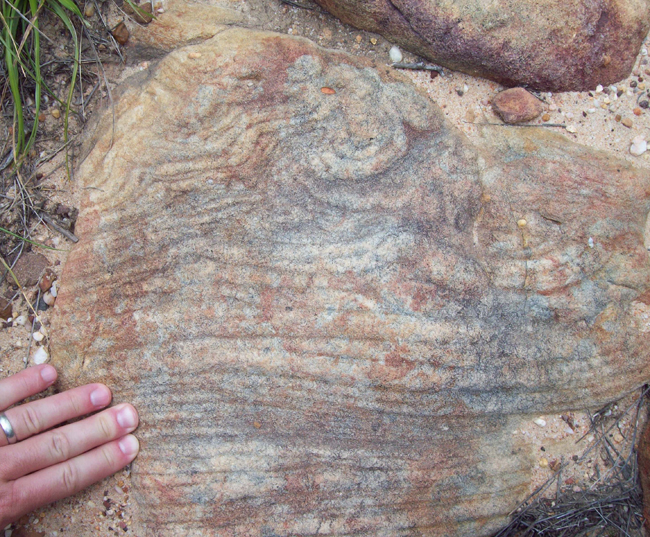
…And I even found a brecciated piece, implying some serious tectonic disturbance, but that’s a subject for a later post in this series…
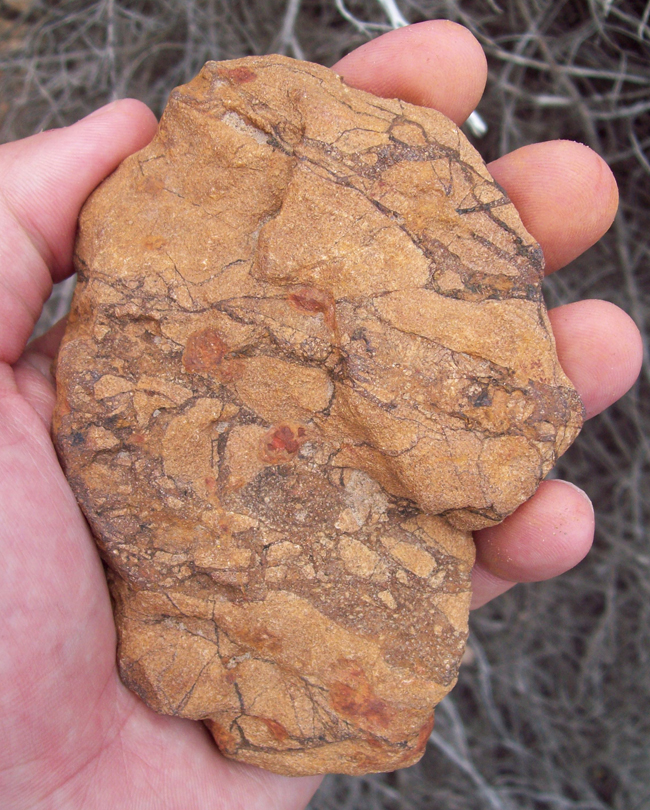
More on that tomorrow…

Callan:
You’ve got me… What can we say about the depositional environment that yields a mix of mature sands and mature egg-sized pebbles?
Could it be like the “Cloyd Conglomerate” of the Lower Mississippian Price Formation of southwestern Virginia? I recall it (the Cloyd) being somewhat like that.
http://earth.geology.yale.edu/~ajs/1973/ajs_273A_11.pdf/326.pdf
and http://www.dmme.virginia.gov/commercedocs/PUB_124.pdf
I may have given the false impression that most of it is conglomeratic or at least pebble-bearing. This is not the case. Most of it is a plain, clean, pure quartz sandstone.
As to their origin, John S. Compton’s book The Rocks and Mountains of Cape Town suggests that some sedimentologists interpret them as river deposits, and others see them as likely beach deposits.
Thanks, Callan. Although the Cloyd is a very conglomeratic unit, there are parts that have a similar “floating clast” appearance (within a clean quartzitic sandstone). I would suspect (w/out any other info) that there probably is an updip equivalent somewhere (for the TMS), to what you saw that is the ultimate source. I also recall that some of the Silurian sandstones in Va have this bimodal appearance. I remember Krieisa thought the Cloyd was a beach/nearshore deposit; not sure what later workers like Bjerstedt thought. Fantastic post – I especially liked that photo of the narrow trail next to the cliffs (in Pt.1).
Hey! That grain supported sandstone with the pebbles in it is not Peninsula Formation like the big cross-bedded stuff – it belongs to the Snueukop Member (diamictite) of the overlying Pakhuis Formation. Some workers think it’s a glacial diamictite but I think it’s debris flows formed by remobilization of Peninsula sandstones. It occurs near/at the top of the Peninsula Formation but is only reported from the N-S trending limb of the Cape Fold belt. See Backeberg & Rowe (2009) Mega-scale (~50m) Ordovician load casts at De Balie, South Africa: Possible sediment fluidization by thermal destablization. South African Journal of Geology v. 112, 187-196
Thanks, as always, for setting me straight. Wish we could have had you there to guide us.